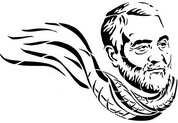The EASIEST (FIRST) WAY to access the X11 window system is to call up the initialization program xinit from the console. Then, the xinit analyzes the contents of $HOME/.xinitrc and starts commands entered there in sequence, analogously to shell scriptprocessing.
If the ~HOME/.xinitrc configuration file does not exist,xinit opens a command interpreter (xterm)...
xterm -geometry +1+1 -n login -display :0
* The -geometry +1+1 option has the effect that the leftcorner of the xterm window on the upper picture margin ispositioned one pixel down and to the right...
* The -n loginoption assignsthe name login to the window...
* The display: 0option causes xinitto present the window on the local X server...
The common syntax for specifying the positions at which anX application should appear, allows the user in addition to statethe window's height and width:
-geometry WxH+-X+-Y
positions the X client with width Wand height H at the place (X, Y)relative to the left (+) or right (-) or upper (+) or lower (-) screenmargin.
Note that text-oriented applications use Wand H as rowand column number, whereas graphics applications interpret themas pixels.
The user's startup file $HOME/.xinitrc usually containsat least one xterm application and an X window manager.
xrdb −load $HOME/.Xresources
xsetroot −solid gray&
xbiff −geometry −430+5&
xclock −geometry 75x75−0−0&
xload −geometry −80−0&
xterm −geometry +0+60 –ls&
xterm −geometry +0−100&
xconsole −geometry −0+0 −fn 5x7&
exec twm
The SECOND access method is to call up the shell script startx.
startx checks whether or not there is a /xinitrc file in the user's home directory. If not, startx will ask the xinit program to use the start-up file/usr/X11R7/lib/xinit/xinitrc instead, and the desktopappears according to the entries located there.
تیدبلیوام (twm) مدیر پنجره (Window Manager) استاندارد (پیش فرض) سامانه پنجره اکس (X Window System) از نسخه X11R4 به بعد می باشد. twm در زمان خود موفقیت بزرگی به حساب میآمد. اما بعدها، توسط مدیر پنجرههای جدیدتر جایگزین شد. چرا که مدیر پنجرههای جدیدتر از ابزار ویجت (Widget Toolkit) استفاده میکردند و بنابراین ظاهر کاربرپسندتری داشتند؛ در حالی که twm مستقیماً با استفاده از کتابخانه اکس (Xlib) نوشته شده بود. twm بسیار انعطاف پذیر و قابل گسترش است.مدیر پنجرههای زیادی از کدهای twm به عنوان پایه و اساس خود استفاده کردند که مهمترین آنها مدیر پنجره FVWM است.


